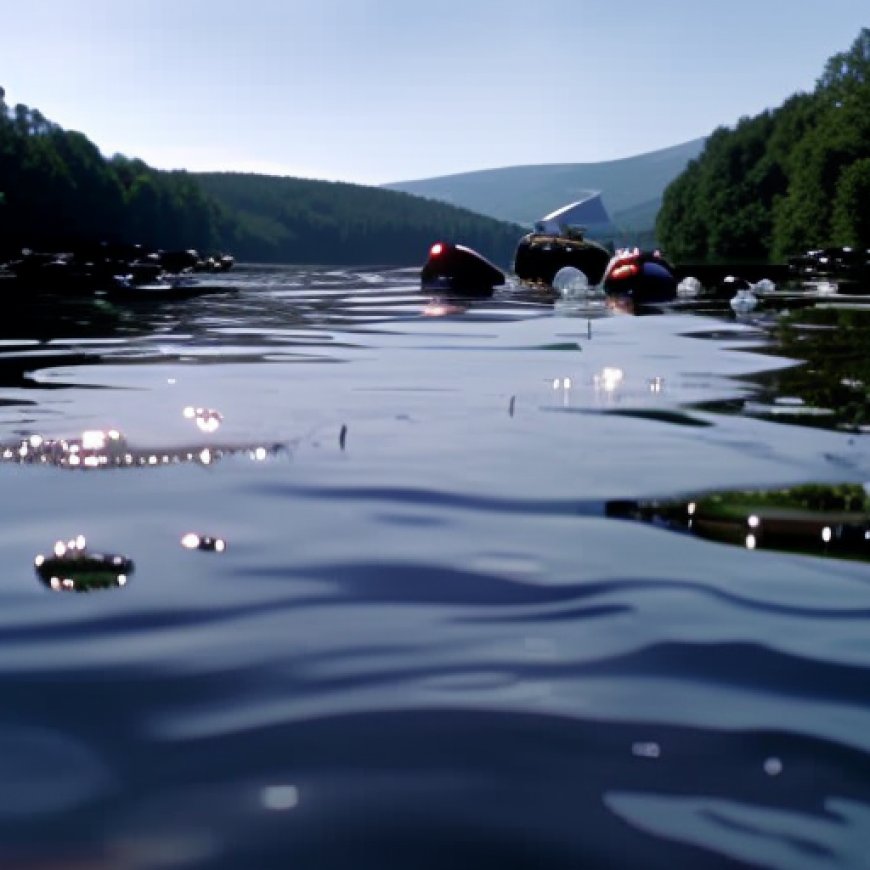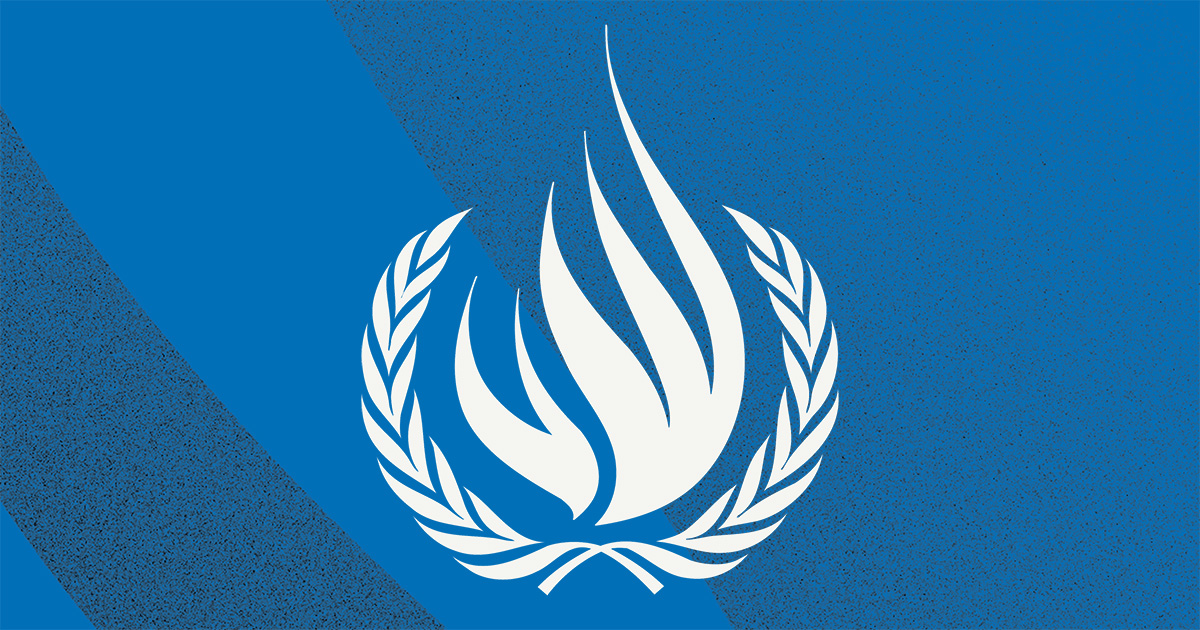Systematic pollution of freshwater affects the human right to water for billions of people worldwide: UN expert
Systematic pollution of freshwater affects the human right to water for ... OHCHR


UN Expert Urges Governments and Private Sector to Ensure Access to Safe Drinking Water and Sanitation

GENEVA (14 September 2023) – In a report presented to the 54th Session of the UN Human Rights Council, Pedro Arrojo-Agudo, the UN Special Rapporteur on the human rights to safe drinking water and sanitation, emphasized the need for Governments and all actors, including the private sector, to prioritize the Sustainable Development Goals (SDGs) and work towards ensuring access to safe drinking water and sanitation for two billion people worldwide.
Increasing Contamination of Aquatic Ecosystems
Arrojo-Agudo highlighted the alarming increase in contamination of aquatic ecosystems with heavy metals and other toxins from legal and illegal mining, as well as other production activities, on all continents. He emphasized that people living in poverty, particularly those near polluted freshwater sources, are the most vulnerable to these harmful effects.
The Importance of Wetlands, Rivers, and Lakes
The Special Rapporteur emphasized that wetlands, rivers, and lakes are essential for sustaining life on islands and continents. He described underground aquifers as the natural water supply network for human settlements and referred to them as the “water lungs of nature.”
Threats to Freshwater Resources and Human Rights
Arrojo-Agudo expressed deep concern over the over-exploitation, land grabbing, and toxic contamination of aquatic ecosystems, which pose a threat to the sustainability of freshwater resources and the human rights of billions of people. He called on the international community to introduce a specific crime to punish the systematic toxic pollution of aquatic ecosystems and hold perpetrators accountable.
The Unsustainability of the Current Development Model
The expert identified the unsustainability of the current development model, based on the paradigm of domination over nature, as the root cause of the crisis. He advocated for a new model of environmental regeneration that prioritizes sustainability and adopts a human rights-based approach to water governance.
The Devastating Impact of Pollution
Arrojo-Agudo highlighted the devastating impact of biological, organic, and nutrient pollution, which leads to the deaths of 1.8 million people each year from diarrhoea alone.
Towards a Sustainable Future
The Special Rapporteur emphasized that recognizing the human right to a healthy and sustainable environment, promoting integrated ecosystem approaches, and accepting the rights of nature are crucial steps towards achieving a more sustainable future. He stressed that restoring and conserving aquatic ecosystems is essential for fulfilling the human right to water and sanitation for all.
ENDS
About Mr. Pedro Arrojo Agudo
Mr. Pedro Arrojo Agudo (Spain) is the Special Rapporteur on the human rights to safe drinking water and sanitation, appointed by the Human Rights Council in September 2020. He is Emeritus Professor of Economic Analysis at the University of Zaragoza and previously served as an elected member of the Spanish Parliament during its eleventh and twelfth legislature from 2016 to 2019.
The Special Rapporteurs, Independent Experts, and Working Groups are part of what is known as the Special Procedures of the Human Rights Council. Special Procedures, the largest body of independent experts in the UN Human Rights system, is the general name of the Council’s independent fact-finding and monitoring mechanisms that address either specific country situations or thematic issues in all parts of the world. Special Procedures’ experts work on a voluntary basis; they are not UN staff and do not receive a salary for their work. They are independent from any government or organization and serve in their individual capacity.
SDGs, Targets, and Indicators in the Article
1. Which SDGs are addressed or connected to the issues highlighted in the article?
- SDG 6: Clean Water and Sanitation
- SDG 14: Life Below Water
- SDG 15: Life on Land
2. What specific targets under those SDGs can be identified based on the article’s content?
- SDG 6.3: By 2030, improve water quality by reducing pollution, eliminating dumping and minimizing release of hazardous chemicals and materials, halving the proportion of untreated wastewater, and substantially increasing recycling and safe reuse globally.
- SDG 14.1: By 2025, prevent and significantly reduce marine pollution of all kinds, particularly from land-based activities, including marine debris and nutrient pollution.
- SDG 15.1: By 2020, ensure the conservation, restoration, and sustainable use of terrestrial and inland freshwater ecosystems and their services, in particular forests, wetlands, mountains, and drylands, in line with obligations under international agreements.
3. Are there any indicators mentioned or implied in the article that can be used to measure progress towards the identified targets?
- Indicator for SDG 6.3: Proportion of bodies of water with good ambient water quality
- Indicator for SDG 14.1: Amount of plastic waste generated per capita
- Indicator for SDG 15.1: Proportion of important sites for terrestrial and freshwater biodiversity that are covered by protected areas
Table: SDGs, Targets, and Indicators
| SDGs | Targets | Indicators |
|---|---|---|
| SDG 6: Clean Water and Sanitation | 6.3: By 2030, improve water quality by reducing pollution, eliminating dumping and minimizing release of hazardous chemicals and materials, halving the proportion of untreated wastewater, and substantially increasing recycling and safe reuse globally. | Proportion of bodies of water with good ambient water quality |
| SDG 14: Life Below Water | 14.1: By 2025, prevent and significantly reduce marine pollution of all kinds, particularly from land-based activities, including marine debris and nutrient pollution. | Amount of plastic waste generated per capita |
| SDG 15: Life on Land | 15.1: By 2020, ensure the conservation, restoration, and sustainable use of terrestrial and inland freshwater ecosystems and their services, in particular forests, wetlands, mountains, and drylands, in line with obligations under international agreements. | Proportion of important sites for terrestrial and freshwater biodiversity that are covered by protected areas |
Note: The article does not explicitly mention the targets and indicators. The identified targets and indicators are derived from the content of the article and their relevance to the issues discussed.
Behold! This splendid article springs forth from the wellspring of knowledge, shaped by a wondrous proprietary AI technology that delved into a vast ocean of data, illuminating the path towards the Sustainable Development Goals. Remember that all rights are reserved by SDG Investors LLC, empowering us to champion progress together.
Source: ohchr.org

Join us, as fellow seekers of change, on a transformative journey at https://sdgtalks.ai/welcome, where you can become a member and actively contribute to shaping a brighter future.







